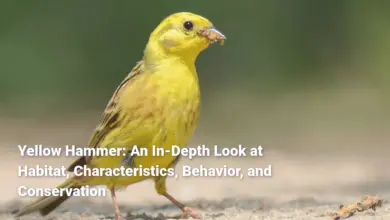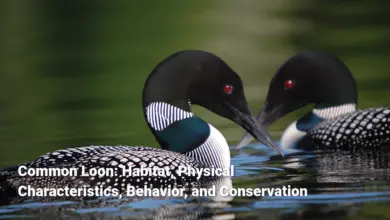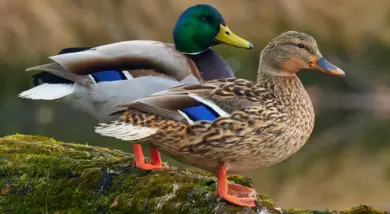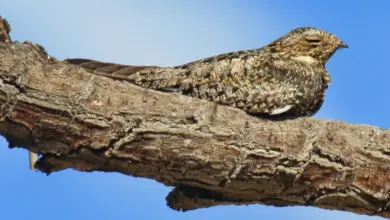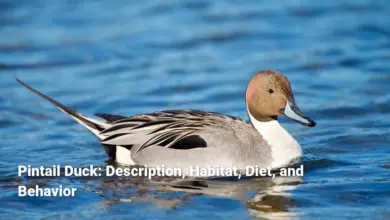Rare Birds in Vermont: Guide to Species and Habitats
Insights into Vermont’s Rare Birds: Species, Habitats, and Conservation Efforts
Rare Birds in Vermont
Vermont’s lush landscapes and varied ecosystems support an impressive array of bird species, both common and rare. Nestled in the northeastern U.S., the Green Mountain State features diverse habitats, from wetlands and grasslands to forests and lakeshores. This variety hosts about 260 bird species, including approximately 88 classified as rare or at risk.
These rare species are more than numbers; they embody stories of survival against human-driven habitat changes and climate change. Organizations such as the Vermont Fish & Wildlife Department and the Vermont Bird Records Committee tirelessly monitor these populations. Their work ensures that birdwatchers and conservationists remain vigilant in protecting these delicate species. In this article, we will explore Vermont’s rare birds, including their species, conservation status, migration patterns, habitat needs, and the efforts to safeguard them.
Overview of Rare Bird Species
Rare bird species in Vermont are like precious gems in a vibrant avian tapestry. They have unique ecological needs and face increasing threats. Unlike common species that adapt easily, rare birds often live in specialized environments. These environments are like secret gardens hidden behind thorny bushes. The birds need very specific conditions to thrive. The intricate relationships between these birds and their environments make them sensitive indicators of ecosystem health.
Notable examples include the Black Tern, which nests in marshes and faces severe threats from habitat loss. Another example is the Peregrine Falcon, which was nearly extinct but is now thriving due to focused recovery efforts. In Vermont, these species are closely documented by the Vermont Natural Heritage Inventory. Additionally, dedicated organizations track their populations and habitats. This systematic documentation is crucial. Each observation acts like a journal entry for these precious species, helping to understand their needs and shape effective conservation strategies.
Key Studies and Resources:
- The Vermont Natural Heritage Inventory provides reliable data about the conservation status of rare birds.
- The Vermont Bird Records Committee (VBRC) reviews incoming reports on rare bird sightings, contributing to yearly assessments of bird populations.
List of Rare Birds Found in Vermont
Vermont’s lowland wetlands, mountainous regions, and mixed forest habitats nurture a selection of rare bird species, each adding its melody to the soundscape of the state.
- Black Tern (Chlidonias niger): This species is one of the rarest nesting birds in Vermont, often found in the Missisquoi National Wildlife Refuge. Here, they thrive in open wetlands, using floating platforms to build nests.
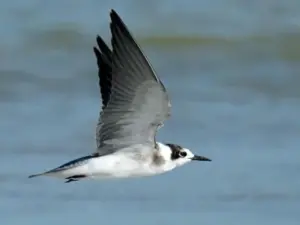
- Common Tern (Sterna hirundo): While primarily a coastal species, it finds refuge in Vermont’s lakes and rivers. Conservation efforts prioritize its habitat, yet threats remain significant due to pollution and habitat loss.
- Peregrine Falcon (Falco peregrinus): Known for its incredible speed and impressive recovery story, it has rebounded from endangered status thanks to breeding programs focused on cliff nesting sites.
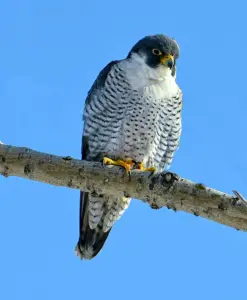
- Golden-winged Warbler (Vermivora chrysoptera): This small bird faces habitat loss due to changing land use. It favors young forests and shrubby areas for nesting.
- Grassland Birds: Several species, including the Upland Sandpiper, are at risk due to habitat fragmentation and agricultural practices. Their reliance on open fields makes them particularly vulnerable.
Each of these species tells a story of survival in a changing environment. Conservation entities work tirelessly to protect these birds, ensuring their continuing presence in Vermont’s diverse ecosystems.
Conservation Status of Vermont’s Rare Birds
The conservation status of birds often parallels the health of their ecosystems, resembling a canary in the coal mine, alerting us to underlying environmental issues. In Vermont, rare birds are classified by the Vermont Fish & Wildlife Department using a scale ranging from S1 (very rare) to S5 (common). This ranking system is essential for understanding which species require urgent conservation action.
The Black Tern, categorized as endangered, faces habitat loss from wetlands being drained or contaminated. Similarly, the Bicknell’s Thrush, which is listed as threatened, depends on specific high-elevation forests that are increasingly vulnerable due to climate change. Moreover, ongoing documentation by organizations such as the Vermont Bird Records Committee has uncovered troubling trends. Consequently, these organizations not only identify species at risk but also highlight the intricate web of threats they face, including habitat loss and disease. Therefore, understanding these factors is crucial for developing effective conservation strategies.
Moreover, conservation efforts supported by local organizations have proven successful for certain species. The Peregrine Falcon recovery program stands as a beacon of hope, showcasing what thoughtful, targeted actions can achieve when communities rally around a cause. Understanding the conservation status of these birds is critical for informing ongoing efforts to sustain their populations and the ecological integrity of Vermont.
Comparing Rare and Common Bird Species in Vermont
The stark contrast between rare and common bird species in Vermont provides insights into ecological resilience and vulnerability. Imagine a bustling marketplace: common birds, like sparrows and robins, flit about, easily adapting to diverse environments, much like how market-goers navigate through crowds. Conversely, rare birds are akin to niche artisans, requiring specific conditions and support to thrive.
While common birds exhibit adaptability and are often found in various habitats, rare birds such as the Golden-winged Warbler huddle in limited, specialized environments. These rarer species often exhibit restricted ranges and lower population densities, making them more susceptible to human-induced changes and ecological destabilization. For example, many grassland birds, like the Bobolink, rely heavily on expansive meadow habitats for breeding, which are rapidly dwindling due to urban development and agriculture.
| Aspect | Rare Birds | Common Birds |
|---|---|---|
| Habitats | Specialized, limited environments | Diverse, adaptable habitats |
| Population Density | Generally lower; more susceptible | Typically higher; more resilient |
| Adaptability | Limited adaptability | Highly adaptable |
| Threats | High; habitat loss, climate change | Moderate; omnipresent threats |
In essence, the plight of rare birds serves as a poignant reminder of the need for conservation, not just for the sake of preserving species, but for maintaining the delicate balance of ecosystems. The future of Vermont’s avifauna hinges on our ability to recognize and act upon these differences, creating strategies that prioritize the most vulnerable.
Birdwatching and Reporting Rare Species in Vermont
Bird observation in Vermont is akin to solving an intricate puzzle, with enthusiasts piecing together sightings of rare species while contributing to a larger conservation narrative. The Vermont Bird Records Committee (VBRC), a vital component of this community, actively encourages birdwatchers to document their sightings meticulously.
Understanding how to report rare bird species not only enhances individual birdwatchers’ experiences but also contributes to the conservation efforts of organizations committed to understanding avian populations. Through robust platforms like eBird, observers can easily input their data while connecting with other birders throughout the state.
Summary points for observers include:
- Identify Species: Reference the Vermont Bird Checklist to determine rarity and reporting needs.
- Gather Details: Log vital information such as date, time, location, behavior, and any photos.
- Documentation: Fill out the Rare Bird Documentation Form available on the VBRC website.
By participating in these documentation efforts, birdwatchers are not just spectators, but vital contributors to the preservation of Vermont’s avian biodiversity.
Top Birdwatching Spots for Rare Birds in Vermont
Vermont’s varied landscapes provide ideal venues for birdwatching, each location offering unique opportunities to spot rare species. Picture wandering through picturesque wetlands, grassy meadows, or dense forests; each step unveils a potential sighting that brings excitement and joy. Key birdwatching locations include:
- Dead Creek Wildlife Management Area (WMA): Known for its waterfowl, this area is an avian hotspot, especially during migration seasons.
- Little Otter Creek WMA: A great site for observing wetland birds and migratory species along Lake Champlain.
- Wenlock WMA: Here, birders can seek out boreal species like the Spruce Grouse in its preferred bog habitats.
- Snake Mountain WMA: Specializes in hawk watching during fall migrations, alongside a rich variety of woodland birds.
- Eagle Point WMA: Located beside Lake Memphremagog, it hosts wetlands and grasslands ideal for observing grassland birds.
These locations not only provide essential habitats for rare birds but also create community hubs where birdwatchers can gather, share stories, and contribute to our understanding of avian life. Each outing becomes a journey through Vermont’s rich biodiversity, closely intertwined with conservation efforts that protect these essential habitats.
Reporting Rare Bird Observations in Vermont
Reporting rare bird sightings in Vermont is a systematic process, essential for documenting and protecting the state’s avian populations. Birders play a crucial role in this process, with their observations forming the backbone of avian data collection. Here’s a step-by-step guide to ensuring your sightings are effectively reported:
- Identify the Bird: Understanding whether the species is considered rare or unusual is vital. Refer to the Vermont Bird Checklist to confirm this.
- Document Your Observation: Collect thorough details about the sighting:
- Date and Time
- Specific Location: GPS coordinates are ideal.
- Behavioral Observations: Feeding, vocalizations, or nesting activity.
- Physical Characteristics: Size, color, and identifying marks.
- Any accompanying photographs or audio recordings increase validity.
- Complete the Rare Bird Documentation Form: This form is available on the VBRC website, designed to encourage comprehensive reports.
- Submit Your Report: Send your completed form to the VBRC, which reviews submissions annually.
- Share via eBird: This additional step allows for broader participation, helping to build a comprehensive database of avian sightings across Vermont.
In each report, birders contribute to a collective understanding of species distribution, migration patterns, and population trends, filling in the mysterious gaps about birds’ lives with every submission.
Vermont Bird Records Committee’s Process for Rare Species Documentation
The Vermont Bird Records Committee (VBRC) operates as a guardian of accuracy and quality for bird documentation within the state. Its annual review meetings serve as crucial checkpoints that validate the myriad reports submitted each year. This meticulous process ensures that each observation contributes value to the collective understanding of bird populations.
The documentation process unfolds as follows:
- Submission Verification: Upon receiving reports, the committee reviews all documentation submitted by observers, scrutinizing details like location accuracy and species identification.
- Annual Review Meetings: Typically held in November, these meetings focus on assessing sighting reports, determining which are accepted for inclusion in official records.
- Species Tracking: Not only does the VBRC ensure that recorded species are verified, but it also tracks changes in populations and distributions over time, providing critical insights for conservationists.
- Collaboration with eBird: The VBRC collaborates with eBird to streamline records collection, allowing observers to easily share data, which enhances the richness of Vermont’s birding community.
By aligning rigorous scientific inquiry with engaging community efforts, the VBRC reinforces the importance of bird observation and the data it generates, ensuring the conservation of Vermont’s unique avian biodiversity.
Habitat and Ecology
The habitats that support rare birds in Vermont are intricate webs of ecological relationships, each playing a critical role in the survival of its inhabitants. These environments serve as both nesting grounds and crucial feeding areas, contributing to the overall health of the ecosystem. Understanding these habitats parallels understanding a musician’s instrument; each is unique yet vitally connected to the sound it produces.
On the landscape of Vermont, key habitats include wetlands, grasslands, boreal forests, and more. By focusing on these environments, conservationists can develop tailored strategies that promote the survival of vulnerable bird species.
Key Habitats for Rare Birds in Vermont
Vermont supports several key habitats that play host to its rare bird populations, each serving distinctive roles:
- Wetlands: These areas provide crucial nesting and feeding grounds. Species like the Black Tern thrive in these rich environments. Wetlands are often the lifeblood of biodiversity, harboring vast species rich in nutrients and supporting a web of life.
- Grasslands: Essential for rare birds like the Upland Sandpiper and Bobolink, grasslands have been declining due to agricultural changes and urban expansion. These open spaces are vital for breeding and foraging.
- Forests: Vermont’s boreal forests are critical for a range of avian communities. The Bicknell’s Thrush prefers these higher elevation forests, showcasing the complex interplay between species and their habitats.
- Bogs and Shrublands: Less disturbed areas that encapsulate unique ecosystems, bogs are vital for several rare bird species that rely on this elusive environment for nesting.
- Rivers and Lakeshores: Aquatic environments draw birds such as the Osprey, which hunt over open water, underscoring the importance of maintaining high-quality water resources for avian life.
This multi-faceted approach to habitat conservation underscores the interconnectedness of ecological networks in Vermont and illustrates just how critical these habitats are for the avian species that inhabit them.
Impact of Habitat Loss on Bird Populations
The loss of habitats in Vermont is analogous to a song losing its melody; without the proper environment, the complex symphony of bird populations experiences discord. Habitat loss and degradation profoundly affect bird populations by diminishing food sources, nesting sites, and vital migratory stopover locations.
Common threats that contribute to habitat loss include urbanization, agricultural expansion, and climate change. For instance, grassland birds such as the Grasshopper Sparrow require expansive open fields that are often lost to development or intensive farming practices. Similarly, the decline of wetland environments significantly threatens populations like the Common Tern, who rely on safe nesting grounds.
Shrinking habitats lead to smaller and more isolated populations, increasing the risks of inbreeding and genetic diversity loss, which jeopardizes species long-term survival. Research shows critical correlations between habitat quality and bird breeding success, indicating that maintaining healthy ecosystems is paramount. As habitats erode, so too do the rich narratives of bird life in Vermont.
Efforts to mitigate these impacts involve proactive habitat restoration and sustainable land-use practices. By prioritizing the conservation of existing natural areas, Vermont can retain its ecological integrity and bolster the resilience of its bird populations.
Migration Patterns of Rare Birds in Vermont
Migration is a captivating, instinctual journey that many bird species undertake, akin to a grand adventure weaving throughout seasons. For rare birds in Vermont, these journeys are often fraught with dangers and challenges, influenced by environmental conditions and changes along their migratory routes.
Migration patterns reveal critical insights into the life cycles of vulnerable species. For example, the Kirtland’s Warbler travels from its Michigan breeding grounds to the Bahamas during winter. Its reliance on particular habitats at both ends of its journey exemplifies the delicate balance needed for survival.
Vermont serves as an important stopover along migratory paths for several species, providing rest and nourishment. However, habitat changes, such as wetland drainage and forest fragmentation, can disrupt these vital travel routes. Birds face challenges finding adequate food and shelter, which can affect breeding success and ultimately survivability.
A deeper understanding of these migration patterns helps shape effective conservation strategies. For instance, protecting critical habitats that support birds during migration can create safe corridors that allow for unimpeded travel. By recognizing the significant ecological role that these migrations play, conservationists can better address the pressures that threaten rare bird populations in Vermont.
Conservation Efforts
Vermont’s commitment to conserving its rare bird populations underscores the state’s recognition of the intricate relationship between birds and their habitats. Inspired by a deep love for the natural world, many organizations and agencies engage in rigorous conservation efforts aimed at preserving Vermont’s avian biodiversity.
Various initiatives focus on monitoring bird populations, restoring critical habitats, and educating the public about the importance of preventive conservation measures. These collective efforts resemble teamwork in sports, where each player’s contribution is essential to achieving success; in this context, every conservation initiative is a step toward ecological harmony.
Organizations Involved in Bird Conservation
Key organizations in Vermont play a pivotal role in fostering bird conservation and addressing the challenges facing rare species. These organizations collaborate to create a comprehensive approach that includes research, habitat restoration, and community engagement:
- Audubon Vermont: This organization spearheads numerous programs focused on critical bird habitats and species. Their Champlain Valley Bird Initiative specifically aims to conserve species like the Golden-winged Warbler, which faces steep declines.
- Vermont Center for Ecostudies (VCE): VCE conducts extensive research on avian populations, with initiatives such as the New England Grassland Ambassadors Program emphasizing community involvement in protecting priority species.
- Vermont Fish and Wildlife Department (VFWD): Collaboratively working with Audubon and VCE, VFWD assesses and protects vulnerable bird species. Programs like the Vermont Loon Conservation Program engage citizen scientists to monitor local populations.
Through these organizations, a multi-faceted approach to bird conservation reinforces the importance of prioritizing species that are at risk, showcasing how collective action can yield positive results.
Successful Conservation Programs in Vermont
Vermont has seen several successful conservation programs aimed at reversing the declining trends of its rare bird populations. These initiatives illustrate how focused efforts can lead to remarkable recovery stories, transforming original narratives of decline into ones rich with renewal and hope.
- Peregrine Falcon Recovery: Once endangered, the Peregrine Falcon has seen successful population restoration due to dedicated breeding and monitoring efforts. This program exemplifies how targeted conservation actions can reestablish populations even from a precarious state.
- Vermont Loon Conservation Program: By involving local volunteers, this initiative has successfully engaged the community in activities such as nest monitoring and public education about the importance of protecting Common Loons and their habitats.
- Grassland Bird Initiatives: Programs aimed at restoring and managing grassland habitats have begun to reverse the decline of species such as the Bobolink and Upland Sandpiper through cooperative land management strategies that prioritize avian needs.
Through these successful programs, Vermont demonstrates the significance of collaborative efforts in conservation. Each initiative serves as a powerful testament to the ability of communities to come together for a common goal, ensuring that Vermont’s avian treasures remain part of its vibrant natural landscape.
Recent Sightings and Data
As birdwatchers illuminate the rich tapestry of avian life in Vermont through their dedicated observations, recent data has unveiled notable rare bird sightings that contribute valuable intelligence to conservation efforts. Every sighting tells a story and facilitates understanding of the ongoing dynamics within bird populations.
Current Rare Bird Sightings in Vermont
The following recent sightings reflect an impressive breadth of avian diversity in Vermont, captivating both seasoned birders and new enthusiasts:
- Ash-throated Flycatcher (Myiarchus cinerascens): Reported in Middlebury on December 17, 2023, this sighting is notable as it marks a new addition to Vermont’s bird list according to the VBRC’s recent report.
- Blue-winged Teal (Spatula discors): This species has been sighted multiple times, including:
- 1 at Campbell Flats Road, Windsor on August 31, 2024.
- 3 at Ompompanoosuc River Flats, Windsor on the same date.
- Additional counts of 4 observed earlier in the week.
- Eastern Whip-poor-will (Antrostomus vociferus): Confirmed sightings of 3 individuals occurred on August 25, 2024, at Snake Mountain Road, Weybridge.
- Parasitic Jaeger (Stercorarius parasiticus): Observed at Delta Park IBA, Chittenden on August 26, 2024, contributing to a broader understanding of migratory patterns.
- Laughing Gull (Leucophaeus atricilla): Documented on August 26, 2024, at Moore Reservoir, Saint Johnsbury.
- Philadelphia Vireo (Vireo philadelphicus): Confirmed sightings include one on August 31, 2024, at Camel’s Hump State Forest.
These recent sightings highlight the continuous efforts of birdwatchers. Their contributions are crucial for documenting rare bird populations in Vermont. Using platforms like eBird, individuals can keep the stories of these remarkable creatures up-to-date. This not only enriches our understanding of avian life but also deepens our appreciation for conservation efforts.
In Vermont, the journey of understanding and protecting rare birds is both a privilege and a responsibility. Therefore, by observing, reporting, and nurturing these vulnerable species, communities not only come together but also play a crucial role in safeguarding the birds. Additionally, this collective effort benefits the ecosystems integral to the health of our planet. Consequently, by focusing on these actions, we ensure a more holistic approach to conservation.





